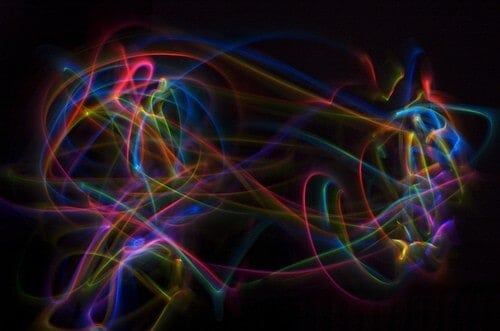Two researchers at UCL Computer Science and the University of Gdansk present a new method for determining the amount of entanglement – a quantum phenomenon connecting two remote partners, and crucial for quantum technology – within part of a one-dimensional quantum system.
In their paper, published this week in Nature Physics, Dr Fernando Brandão (UCL Computer Science) and Dr Michał Horodecki (Institute for Theoretical Physics and Astrophysics, University of Gdansk) demonstrate when the correlation between particles in a sample reduces exponentially with distance, the entanglement between one region and the rest of the sample only depends on the area of the boundary between them.
Characterising entangled states is essential for technologies such as quantum computation, quantum communication and quantum cryptography. Entanglement is also the difficulty behind making computer simulations of quantum systems. This finding shows that a large class of quantum systems (those with exponential decay of correlations) has only limited entanglement and so can be simulated easily.
The relationship between area and entanglement was suspected by researchers in this field based on the intuitive argument that if the correlation between particles in a system dropped off rapidly with distance, only nearby particles would be entangled with each other. Therefore, particles far away from a boundary would not participate in entanglement and only the boundary area would be relevant.
However, this tempting idea was undermined by the existence of a counterexample. This seemed to show that even when two regions could be separated by a layer wide enough to cut off nearly all correlation between them, observers would not be able to know as much about each region as they would if they were genuinely isolated. This ‘data hiding’ phenomenon is a key characteristic of entangled states, where a lack of knowledge of one partner affects what can be measured of the other.
This work resolves the apparent difficulty by combining recent findings from quantum information theory, originally developed for analyzing quantum communication protocols, showing that data hiding cannot hold once exponential decaying correlations are found in all different regions of the system.
Dr Brandão says: “We’re very excited to have produced this method. It proves something that seemed to be intuitively true, but the reason why it is true has turned out to be quite different from the original intuition. The result also helps us identify cases where there is low entanglement. These are often good candidates for simulation using classical computers not capable of modeling the consequences of quantum phenomena.”
Dr Horodecki says: “What I especially like about our result, is that, perhaps for the first time in this domain, we used solely information-theoretic techniques without assuming any specific physical properties of the system other than exponential decaying correlations. This makes the result very general.”


